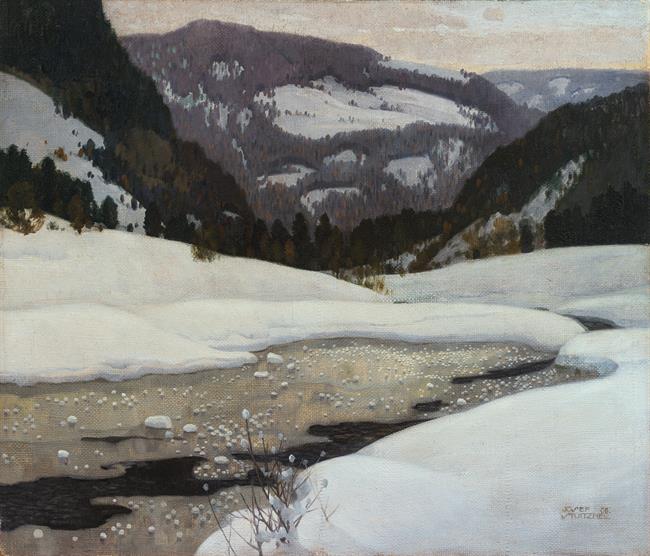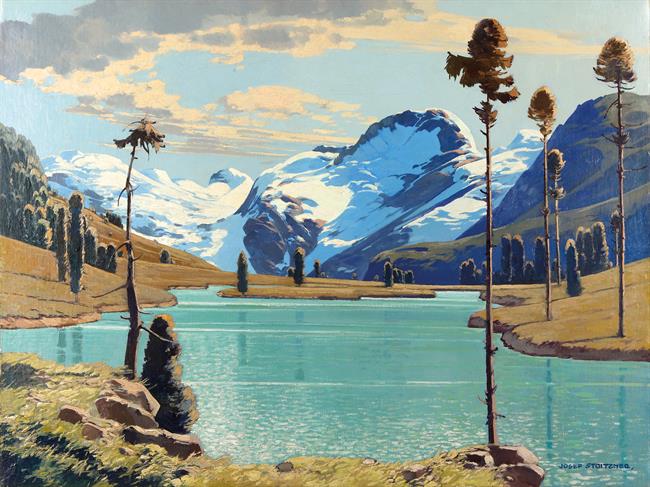 Winterly Landscape with Stream
1908
Winterly Landscape with Stream
1908
Josef Stoitzner
Vienna 1884 - 1951 Bramberg, SalzburgThe painter Josef Stoitzner was born in Vienna in 1884 and received his initial artistic training at the Vienna School of Applied Arts with Anton von Kenner. Later he studied at the Academy of Fine Arts in the painting class under Franz Rumpler. From 1916 to 1919, he taught landscape painting at the Vienna Women's Academy, and from 1922 he gave drawing lessons at the Federal Educational Institutes in Vienna, Traiskirchen, Wiener Neustadt and Graz-Liebenau. Finally, he returned to the Academy and taught there from 1932 to 1944.
In 1906 Stoitzner became a member of the Secession and exhibited his latest works there regularly at a young age. His early works of the beginning of the 20th century can be attributed to Art Nouveau and realistic manner, but are characterized by a cool objectivity and achieve spatial plastic effect by means of two-dimensional and linear stylizations and thus ultimately characterize his mood-realistic style. The painter showed an artistic interest in unexciting rural scenes and the rural, often wintry cultural landscape instead of extra-ordinary motifs and worked intensively with colored woodcuts. In 1914, he was awarded the Golden Medal of the Exhibition of Book and Graphic Arts in Leipzig and the Medal of the City of Graz. His works are part of the collections of the Austrian Gallery Belvedere and the Wien Museum, among others.
-
Winterly Landscape with Stream 1908
-
Mountain lake around 1926

 Mountain lake
around 1926
Mountain lake
around 1926